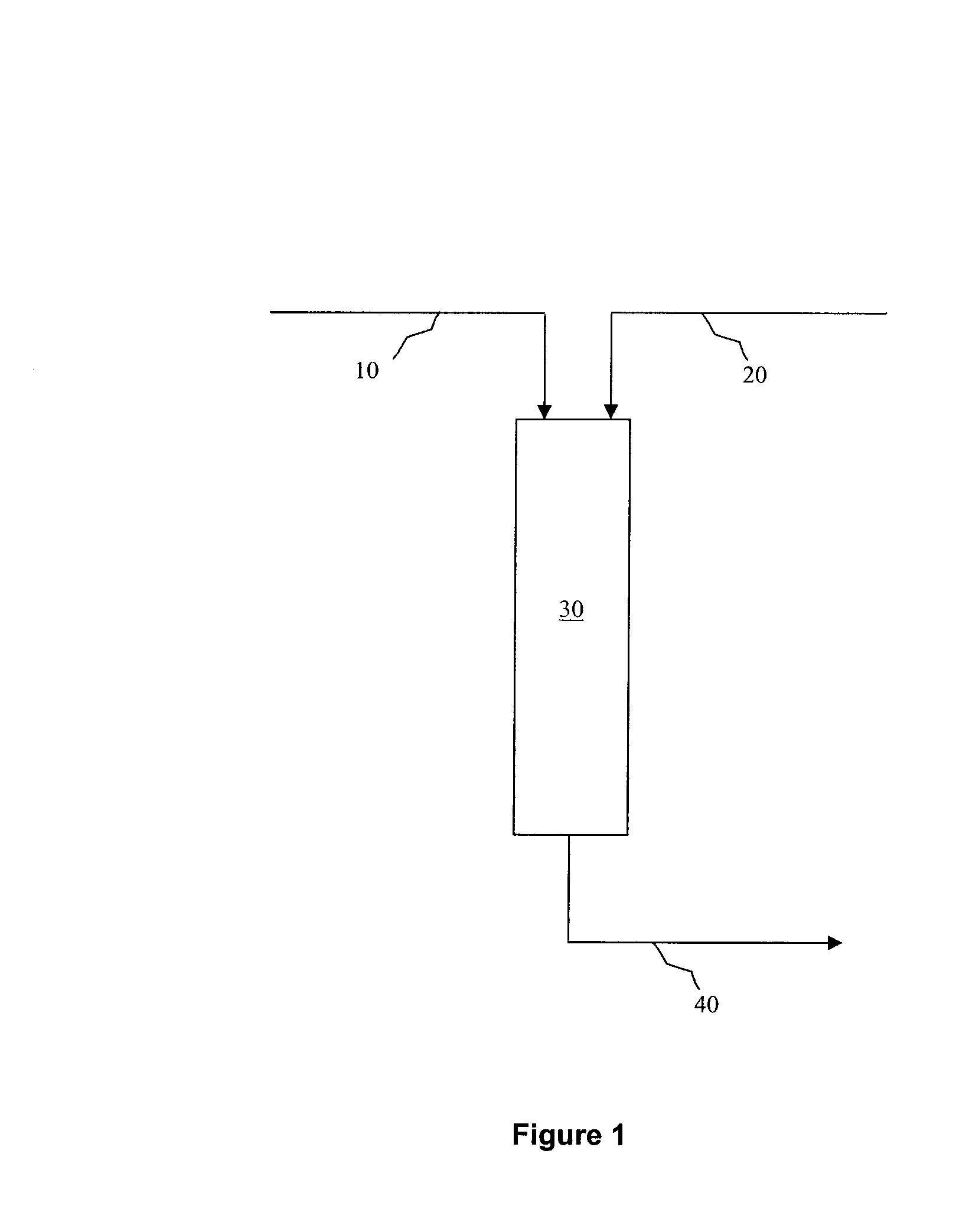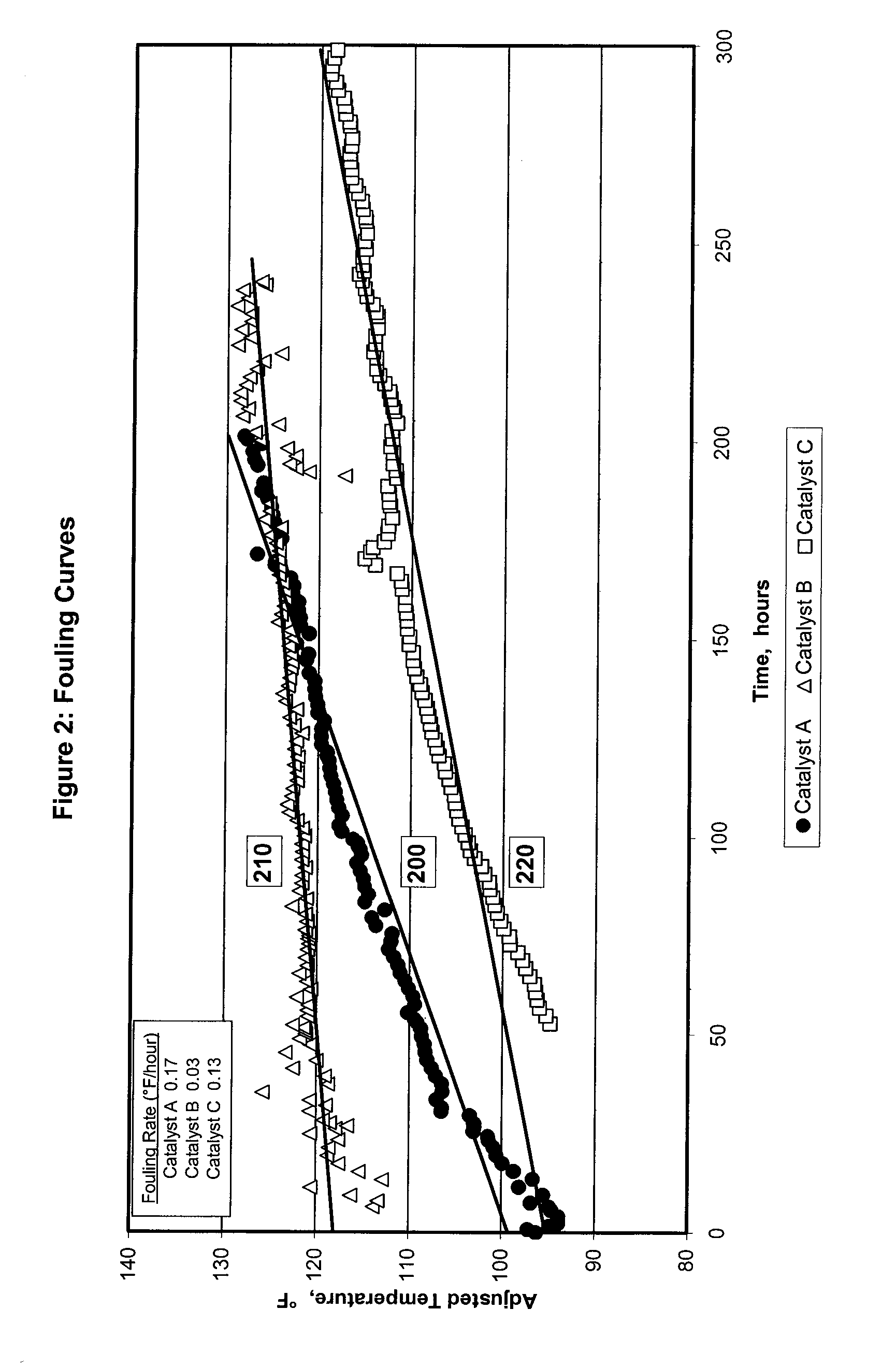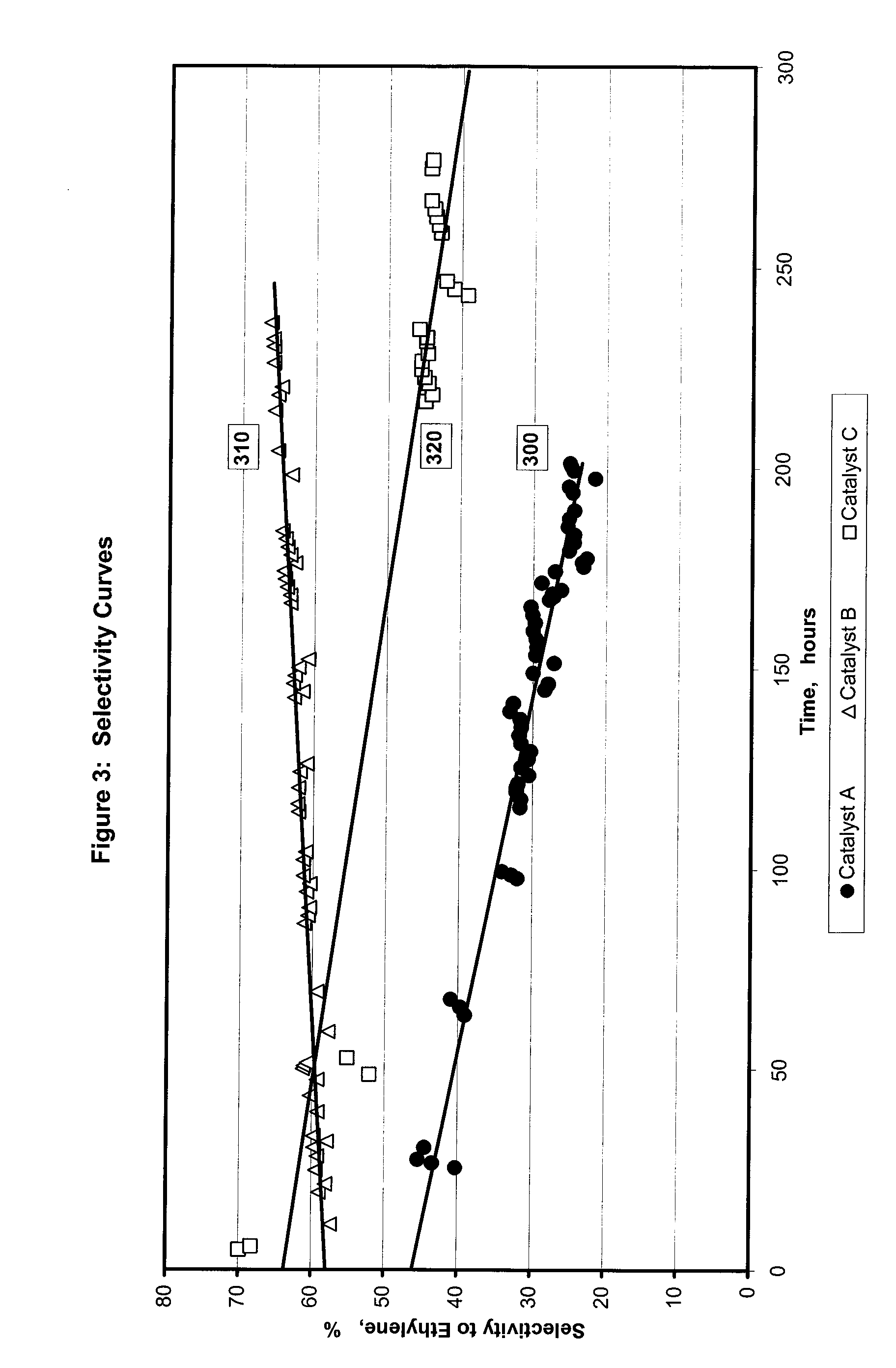Selective hydrogenation catalyst and methods of making and using same
a hydrogenation catalyst and selective technology, applied in the direction of catalyst activation/preparation, physical/chemical process catalysts, metal/metal-oxide/metal-hydroxide catalysts, etc., can solve the problems of adversely affecting the production of subsequent chemicals and polymers
- Summary
- Abstract
- Description
- Claims
- Application Information
AI Technical Summary
Benefits of technology
Problems solved by technology
Method used
Image
Examples
example 1
[0064] The following example illustrates the preparation of various palladium-containing selective hydrogenation catalyst samples, and the use of the samples in a selective hydrogenation process.
[0065] Catalyst A (control) was prepared on α-Al2O3 pellets supplied by Süd Chemie of Louisville, Ky., USA in the form of 4 mm×4 mm tablets as described in U.S. Pat. No. 4,484,015. The α-Al2O3 pellets had a surface area of about 5 to about 7 m2 / g (determined by the BET method employing N2). Catalyst A contained 0.02 weight percent palladium and 0.12 weight percent silver and 99 weight percent Al2O3.
[0066] Catalyst B was prepared as follows: an aqueous solution of about 1.13 g NH4Cl in about 16 g distilled water was added to about 50 g of α-Al2O3 pellets (4 mm×4 mm, surface area of about 5 to about 7 m2 / g, provided by Süd Chemie of Louisville, Ky., USA) followed by drying at about 125° C. for about 1 hour. The support was then calcined at about 538° C. for about three hours in air. Next abo...
example 2
[0072]FIG. 2 illustrates relative foul curves in degrees Fahrenheit per hour (° F. / hour) for one control selective hydrogenation catalyst A, and two catalysts prepared in accordance with the methods described herein for use in an otherwise typical hydrogenation process (selective hydrogenation catalysts B and C). Line 200 tracks reactor temperature over time for a reactor run made with the control Catalyst A. Catalyst A is a selective hydrogenation catalyst comprising palladium / silver supported on an A2O3 support. Line 210 tracks reactor temperature over time for a reactor run made using Catalyst B, which is a selective hydrogenation catalyst comprising palladium / silver supported on a chlorided catalyst support produced using ammonium chloride as the chlorine-containing compound. Line 220 tracks reactor temperature over time for a reactor run made using Catalyst C, which is a selective hydrogenation catalyst comprising palladium / silver supported on a chlorided catalyst support produ...
example 3
[0073] For the selective hydrogenation catalysts and reactor runs described in Example 2, FIG. 3 illustrates relative data for selectivity to ethylene. Line 300 tracks selectivity to ethylene over time of the control catalyst A. Lines 310 and 320 track the selectivity to ethylene over time of the catalysts comprising palladium and a support modified by a chlorine-containing compound (Catalysts B and C). The selectivity for ethylene indicated by line 310 and 320 are greater relative to the selectivity indicated by the control catalyst (line 300). Furthermore, the selectivity represented by line 310 and 320 is more stable over time than line 300. The percent selectivity improvement may be based on the integrated area under the selectivity versus time curve in FIG. 3 as shown in Table 1.
[0074] As a result of improvements in fouling rate, green oil production, and selectivity to unsaturated hydrocarbons, the life of the selective hydrogenation catalyst is extended such that the catalys...
PUM
| Property | Measurement | Unit |
|---|---|---|
| surface area | aaaaa | aaaaa |
| diameter | aaaaa | aaaaa |
| diameter | aaaaa | aaaaa |
Abstract
Description
Claims
Application Information
 Login to View More
Login to View More - R&D
- Intellectual Property
- Life Sciences
- Materials
- Tech Scout
- Unparalleled Data Quality
- Higher Quality Content
- 60% Fewer Hallucinations
Browse by: Latest US Patents, China's latest patents, Technical Efficacy Thesaurus, Application Domain, Technology Topic, Popular Technical Reports.
© 2025 PatSnap. All rights reserved.Legal|Privacy policy|Modern Slavery Act Transparency Statement|Sitemap|About US| Contact US: help@patsnap.com



